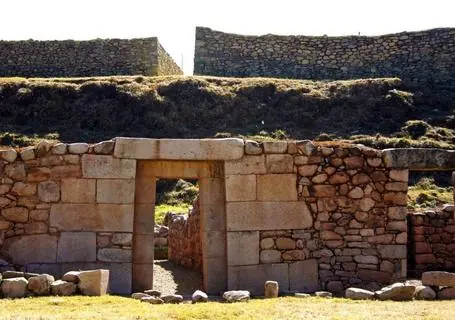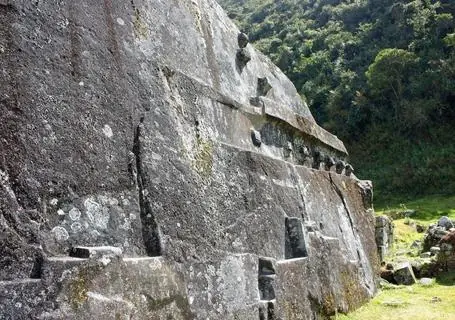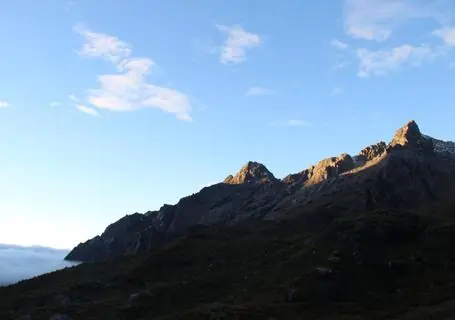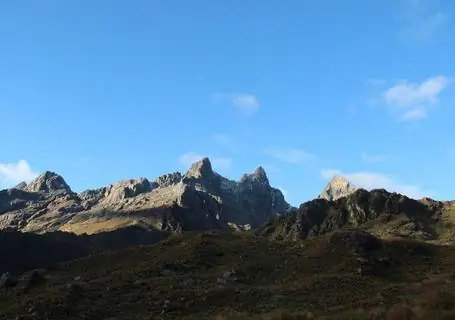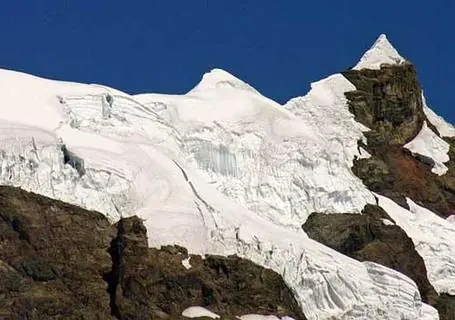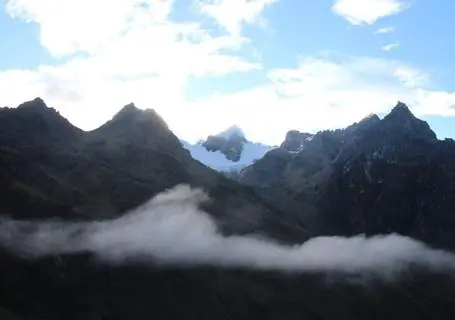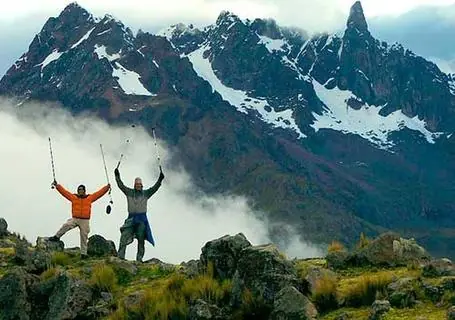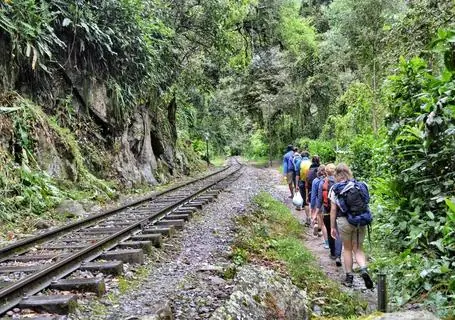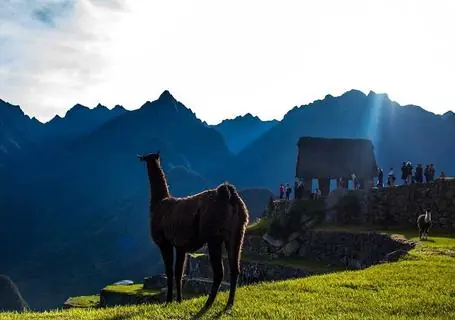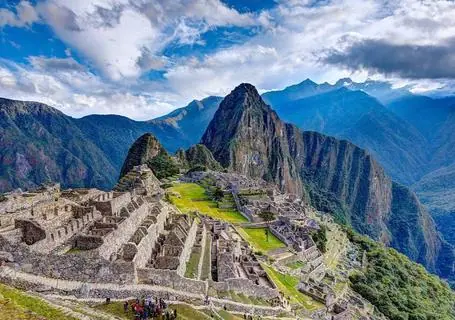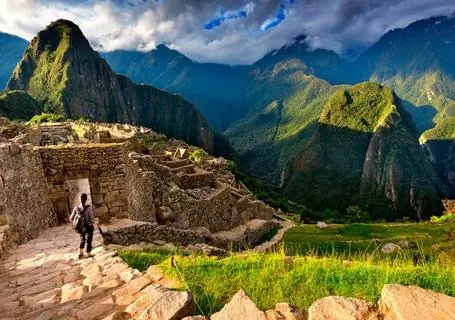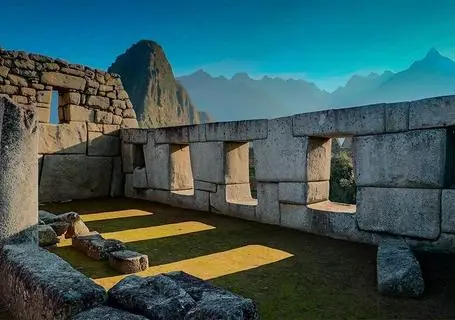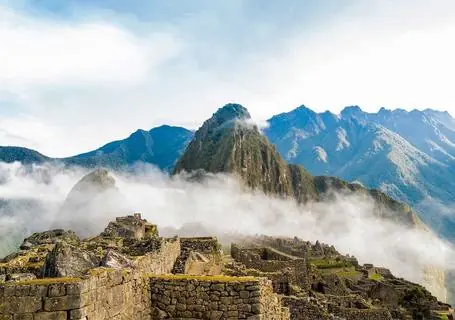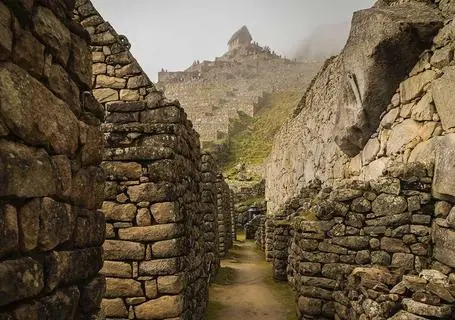Vilcabamba Trek to Machu Picchu - 5 Day
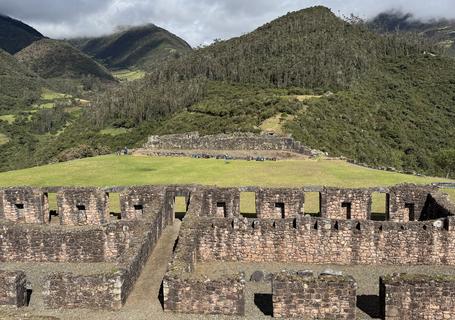
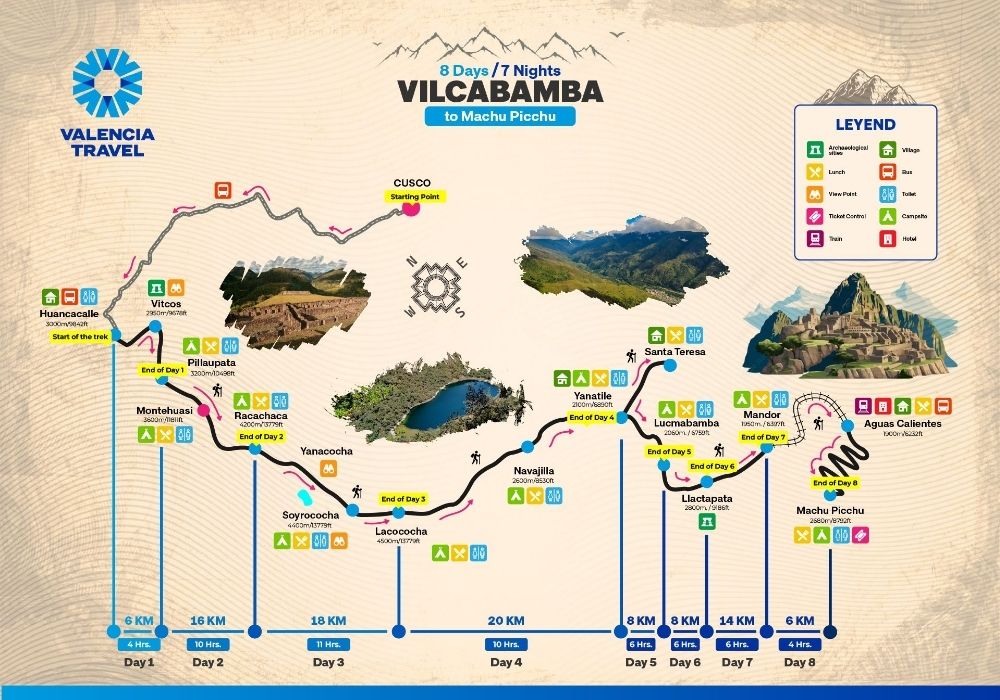
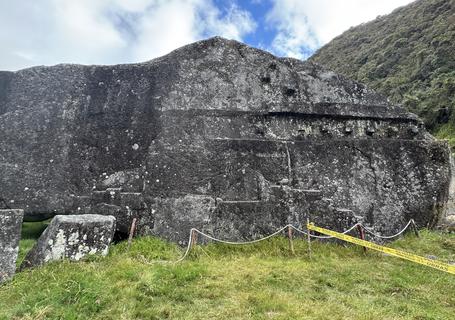
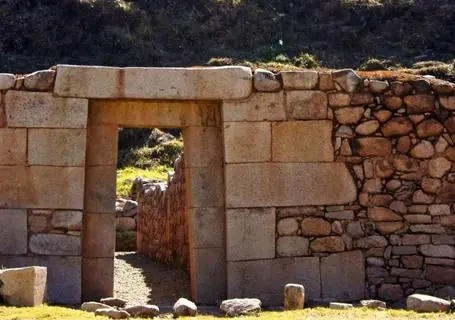
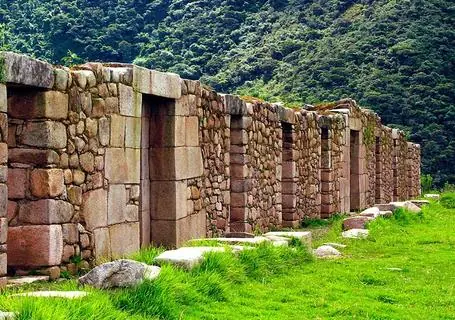
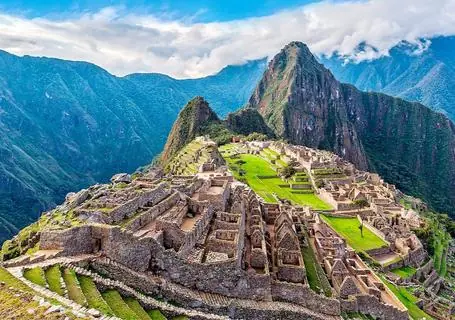
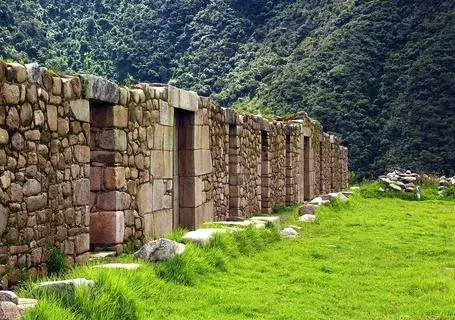 View All PhotosView All Photos
View All PhotosView All PhotosAdventure
Easy
Cusco, Machu Picchu, Vilcabamba
Hiking / Trekking, Archaeological / Architecture, Thermal waters, Nature
| cardinfo-text-5 | ||
| cardinfo-text-7 | Not included | |
| cardinfo-text-8 | cardinfo-not-included | |
cardinfo-text-10
h2-title-1
The Vilcabamba region was a pivotal location at the tail end of the Inca Empire. It was here that the last remnants of the Inca Empire fled after a series of battles against the Spanish conquistadors, forming the new capital of the Neo-Inca State in 1539. The Inca emperor, Manco Inca, took his people to this remote location, where the Incas hoped to hold out against the unceasing hostility of the Spanish, to preserve their knowledge, their culture, their freedom, and their lives. In 1572, however, the Spanish made a final raid on the Incas’ remote jungle capital, which by then was a city of four hundred houses. The Incas were defeated, and their Empire fell soon after.
It is this story of survival and battle that goes with us on our five-day trek along the route to and through Vilcabamba and then on to Machu Picchu. For anyone interested in the history of the Incas, this trek is hard to beat. It’s also a spectacular route in terms of scenery, passing through high tropical forests and between snow-capped mountain peaks. The route is also far less traveled than the Inca Trail and other alternative treks, making it ideal for anyone who really wants to get away from it all, to experience a far-flung adventure in the footsteps of the last Incas, where few have gone before.
 Free Brochure
Free BrochureReady to explore? Download the brochure and start planning!
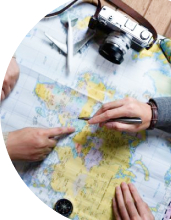
Your FREE travel expert is just a click away
Or Call us now! (888) 803 8004
h2-title-2
Day 1:Sacred Valley to Vilcabamba Archaeological Park
Our adventure begins when we pick you up from your hotel in Cusco. It will be an early start, as we have plenty of ground to cover before we reach Vilcabamba. We will take the road to the Sacred Valley of the Incas, passing the town of Ollantaytambo before rising up over a mountain pass called the Abra Málaga. We’ll then descend through the puna towards the high jungle and the Vilcabamba area.
Our first stop will be at the archaeological site of Huamanmarca in La Convención Province. Here we will see an important usnu, or ritual platform, and a structure with four double-jamb doorways facing the four cardinal points. We’ll then move on to the settlement of Santa María in the Vilcabamba Valley, where we can have a short rest before continuing on to Huancacalle. Here we will leave our motorized transport and meet our arrieros (mule-handlers) and mules which will accompany us on our trek.
After lunch, we’ll start our trek, first visiting the Rosaspata-Vitcos sector of the Vilcabamba Archaeological Park. Vitcos was a preferred residence of Inca nobles and a ceremonial center of the Neo-Inca State. Even after they moved their capital to Vilcabamba (Espiritu Pampa), the Inca nobility still spent time at Vitcos, which had a better climate. We will explore one of the most famous features at Vitcos, the Ñusta Hispana, discovered by Hiram Bingham in 1911. We will also see an intriguing carved rock at the site, known as the Yurac Rumi (White Rock). Some archaeologists suspect that the tomb of Manco Inca might be located in this part of the Vilcabamba region.
Heading on, we’ll trek to Casapata, arriving around dusk. This is where we’ll set up our camp for the night and enjoy a tasty dinner before going to sleep in this beautifully rugged and remote location.
Hiking Time: 2.5 hours
Hiking Distance: 5 km
Lowest Point: 2,950 m / 9, 678 ft
Highest Point: 3,060 m / 10, 039 ft
- Meals: All Included
Day 2:Trekking Through the Vilcabamba Region
Day 2 begins early in the morning, as we have a lot of trekking ahead of us, on what is probably the hardest day of all. We’ll first climb up through the ravine of the Pumachaka River to the Chupana sector of Vilcabamba, where the river begins. Here we will find sections of an old Inca trail, which we will follow, passing through different ecological zones: Quechua montane valleys, cold and dry Suni, and puna shrub lands. Among the diverse local flora we’ll see plants used to dye textiles produced in the area. After a steady uphill trek we will arrive at the Pillaujasa mountain pass, from where we’ll have spectacular views of the dramatic Andean landscape.
Moving on, we’ll follow a trail that descends into the valley of the Racchchaka River, which we’ll follow upstream until we reach Hatunpampa. This is where we’ll camp and have dinner while enjoying spectacular views of the snow-capped Tuytubamba Mountain.
Hiking Time: 10 hours
Hiking Distance: 17 km / 10.56 miles
Lowest Point: 3,060 m / 10,039 ft
Highest Point: 4,086 m / 13,406 ft
- Meals: All Included
Day 3:Vilcabamba Trek from Hatumpampa to Nogalpampa
After an early breakfast, we’ll set of on another tough trek through some mountain passes. First we’ll take the path that climbs to the Yanacocha mountain pass, where we’ll walk through a forest of native qeuña and kiswar trees, at about 4,500 m. From the pass, we’ll have wonderful views of the surrounding landscape and across Yanacocha Lake. Next we’ll hike to the Mojon pass, the last high pass on our trek. Standing here on the rugged puna, you’ll get a real sense of how far we have come, leaving modern civilization far behind us.
We will then descend through the Mutuypata ravine. Here we’ll have lunch and a well-deserved rest, before continuing on to the Saqsarayoq River Valley. We’ll cross the Saqsarayoq and soon arrive at Nogalpampa, where we’ll set up camp and have dinner.
Hiking Time: 8 hours
Hiking Distance: 14 km / 8.69 miles
Lowest Point: 2,788 m/ 9,147 ft
Highest Point: 4,500 m/ 14,764 ft
- Meals: All Included
Day 4:Vilcabamba Trek from Nogalpampa to Yanatile
On Day 4 we’ll cover the most distance of any day so far, but now we’ll be at a lower altitude, making things much easier. There are also no more mountain passes to tackle! After breakfast we’ll begin our trek with a downhill hike through a spectacular native forest, heading towards the town of Yanatile. The environment will slowly change as we make our way along the trail, turning from temperature jungle into the coffee and fruit plantations that are typical of this area.
Once we arrive in Yanatile, we’ll board our waiting minibus for the trip to the hydroelectric station located not far from Aguas Calientes, the town that sits below Machu Picchu. From the hydroelectric station, we’ll hike along a trail parallel to the railway tracks that run to Aguas Calientes. This final stage of our trek is mercifully flat and very pretty. It will take about two hours before we arrive in Aguas Calientes (alternatively, if you’re feeling too tired for more trekking, you can take the train from the hydroelectric station to Aguas Calientes, but it will cost at least $25 for the 45 minute journey). We’ll spend the night in a hotel in Aguas Calientes, to be ready for the next day and our tour of the magnificent Machu Picchu.
Hiking Time: 5 hours
Hiking Distance: 23 km /
Lowest Point: 2,100 m / 6,890 ft
Highest Point: 2,788 m / 9,147 ft
- Meals: All Included
Day 5:Machu Picchu in all its Glory (and Return to Cusco)
To best appreciated Machu Picchu, we’ll wake up early in the morning on Day 5 so we can get to the citadel in good time. You’ll have time for breakfast in Aguas Calientes first, and then your guide will pick you up from the hotel at around 5:40 a.m. We’ll then walk to the bus departure point for the short but zigzagging ascent up the road to Machu Picchu.
We’ll then pass through the gates into the Machu Picchu archaeological site. Here you’ll begin your guided walking tour with an experienced and highly knowledgeable guide. Our tour of Machu Picchu will last about two hours, and will take you to all the most famous and most spectacular parts of the extensive archaeological complex. These include the House of the Guardian, the Intihuatana, the Temple of the Sun, the Sacred Plaza and other key locations. And as we walk around, we’ll have spectacular views of the agriculture terraces of Machu Picchu and across to the surrounding mountains and plunging gorges. After the guided tour you’ll have time to explore Machu Picchu as you please, perhaps walking to some less visited parts such as the Inca Bridge.
Once we’ve finished our tour of Machu Picchu, we’ll take the bus back down to Aguas Calientes where you can relax and have lunch (not included) before we board the train back to Poroy and Cusco. Upon arrival at the station, we’ll be waiting to take you back to your hotel in Cusco, where you’ll finish the entirety of your incredible Vilcabamba trek to Machu Picchu.
- Meals: Breakfast
h2-title-3
calendar-consult-us
h2-title-4
whats-included-title
- Maximum group size is 16 people, the excursion leaves with at least 2 people
- Briefing to the tour one day before the trek at 19h00
- Accommodation: Rosaspata campsite (1 night), Lazunapampa campsite (1night), Yanama campsite (1 night), Colcapampa campsite (1night), La Playa campsite (1night), Llactapata campsite (1 night), Mandor lodge in standard room (1 nights)
- Transport: Private or share
- Your Journeys Highlight Moment: Machupicchu and Vilcabamba
- Meals: 7 breakfast, 7 lunches, 7 dinners
- Pack horses that will carry the camping equipment, the cooking equipment and the food
- Horse of ride for 2 days
- Another packhorse to carry your personal gear that weighs up to 7 kilos
- Vilcabamba and Machupicchu entrance fee
- Train ticket from Aguas Calientes to Poroy station
- Round trip bus ticket from Aguas Calientes to Machupicchu
- First aid kit, if you are taking any medications, please bring your prescription with you
- Professional Guided tour ENG
- An assistant guide for groups of more than 7 people
- A chef trained for cooking on trekking routes and an assistant cook
- Complete set of kitchen equipment and utensils
- Dining room equipment which includes tables, chairs, and a dining tent
- Water (you need to bring water for the first morning then we will provide you with drinking - previously boiled - water)
- 24/7 support and emergency line available throughout the itinerary
whats-not-included-title
- Minimum medical and emergency evacuation insurance
- Trip cancellation insurance or any other travel insurance
- Evacuation: in the event of a serious medical injury, we will coordinate with your travel insurance company to arrange evacuation
- Any activity not described in What's Included
- Meals and drinks are not specifying on the itinerary
- Personal equipment (Sleeping bag, walking sticks)
- Gratuities
- Travel insurance
- Personal equipment such as trekking equipment
h2-title-5

specialist-box-title
Natividad Cortez
specialist-box-phrase
top-tours-title
top-tours-info
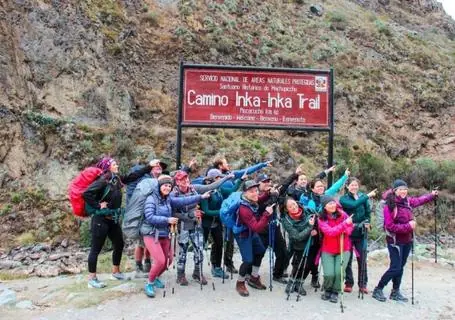
Trek Along the Inca Trail To Machu Picchu
7daysTrek Along The Inca Trail To Machu Picchu with Valencia Travel. We are a renowned Peruvian tour company offering trekking experiences throughout Peru.
card-type-tagAdventure
card-activity-tagModerate - Demanding
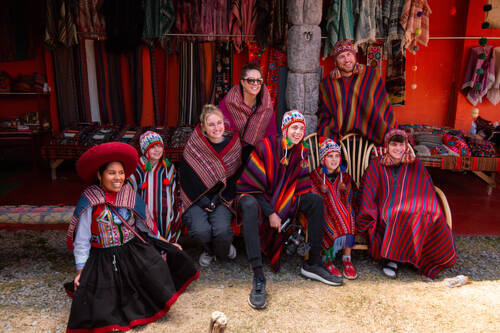
Classic Peru Trip
7daysValencia Travel's classic Peru trip is a bucket-list adventure. This 7 Day trip will take you on unforgettable experiences throughout the Peruvian heartland.
card-type-tagCultural, Gastronomy
card-activity-tagEasy
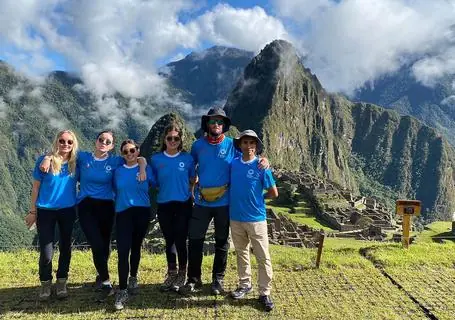
Classic Inca Trail
4daysThe Inca Trail trek to Machu Picchu is the ultimate bucket list hiking experience! Join us on this Classic 4 Day & 3 night Inca Trail Hike!
card-type-tagAdventure
card-activity-tagModerate - Demanding
asso-info-title
asso-info-description
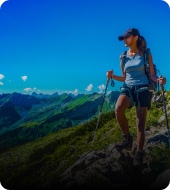 Aventure
Aventure
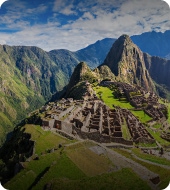 Cultural
Cultural
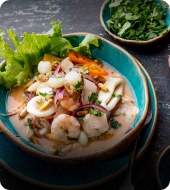 Gastronomy
Gastronomy
 Wellness
Wellness
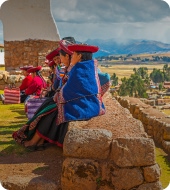 Local Living
Local Living
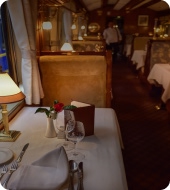 Luxury
Luxury
